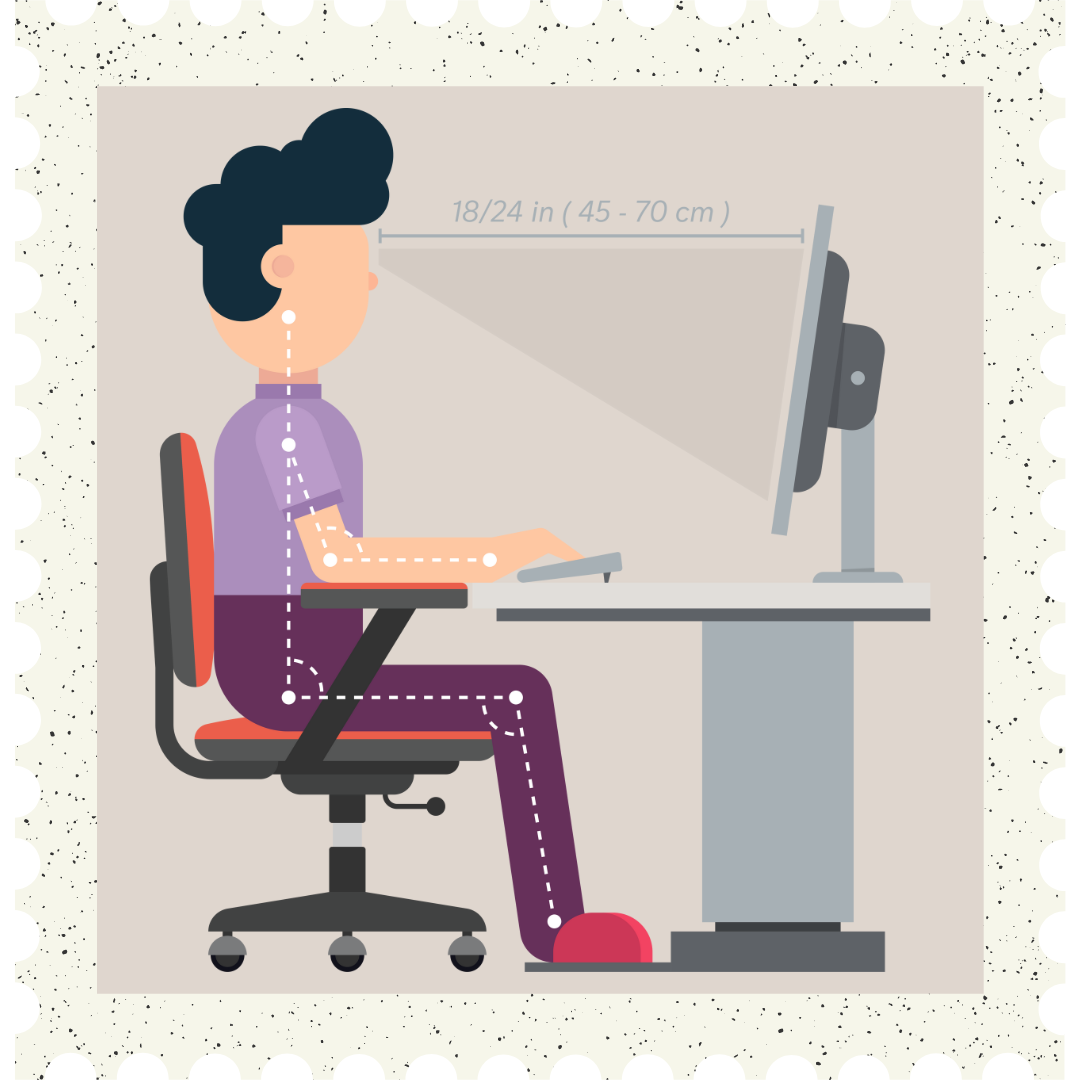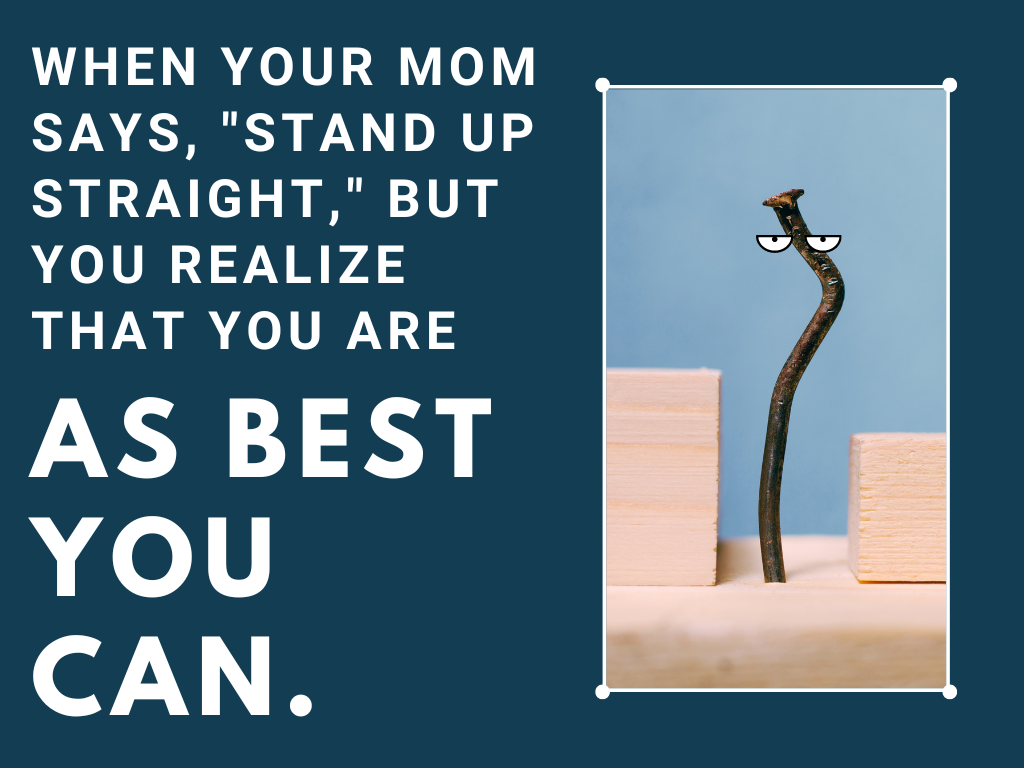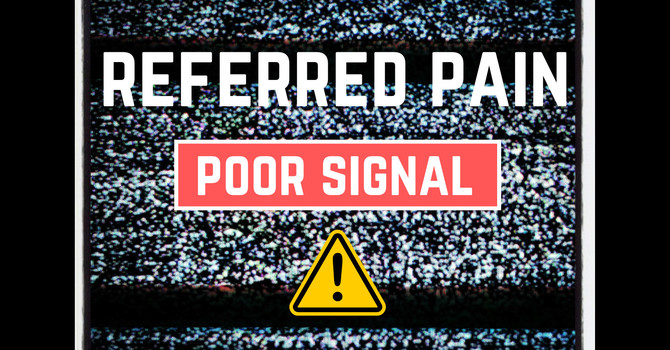Medusa, a monstrous woman of Greek mythology, had writhing snakes on her head instead of hair. To look into the eyes of Medusa would turn the hapless victim to stone. A silly legend, sure, but it seems to have been somewhat prophetic!

Here at Cornerstone, we see all kinds of patients, from the athletic to the sedentary, but the vast majority of them are suffering from a common problem, one that usually underlies ailments ranging from vertigo, headaches, jaw pain, earaches, stiff necks, back pain, and many more.
That common problem? Bad posture, often exacerbated by gazing too long at electronics screens, those modern-day Medusas that stiffen us until we crumble and fall. Back pain has long been a leading cause of sick leave[i], and it’s only become more common with the introductions of personal computers and smartphones.

How posture works
Posture is how your body—and particularly your spine—is positioned. Good posture results in less stress to your muscles, bones, and joints; bad posture can harm not only those structures but the heart, colon, and pancreas as well.[ii] [iii]
And when is your posture at its worst? Often while sitting and looking down at a screen. Good posture is largely about balancing that bowling ball at the top of your spine, e.g. your head; slouching rolls that bowling ball down and forward, which makes your neck and shoulders strain to pull it back where it belongs. At first, everything normalizes once you sit up straight; over time, however, your body will stiffen up to help you maintain the slouch. It can even get to the point where a normal, healthy posture feels uncomfortable, even as the slouch keeps you in pain.
How you should be sitting
To minimize stress to your body, you should be sitting like this:

Feet flat on the floor and as far apart as your knees want to be. This position minimizes the stress to your plantar fascia, ankles, calves, knees, and hips. If your chair is too high for you to keep your feet flat, either lower the seat or find an adequate footrest.
Hips level with knees or slightly above them. Having the hips below the level of the knees impairs circulation of the legs, strains the knees, and makes it harder to get up from the chair.
Lower back in a neutral position. More on that in a bit.
Mid back should be resting against the back of your chair, right over the hips. If it’s not, you’re slouching. Elbows positioned close to your sides and below your shoulders and flexed 90°. Adjust your chair’s armrests to the level of your elbows. You might feel like a tyrannosaurus at first, but it won’t be so bad once you pull your keyboard close to you or when you scoot closer to it.
Shoulders positioned above your hips. Ears positioned above your shoulders.
How Cornerstone can help you improve your posture
It takes training to develop and maintain good posture; unfortunately, few schools or employers prepare us for the rigors of prolonged sitting. Without the right training, your body will become progressively inflexible, which will make it harder to sit upright, which will further stiffen your body, etc.

Because posture is crucial to health, we at Cornerstone evaluate every patient’s ability to control their core stabilizers: the groups of muscles of the low back, abdomen, and pelvis that collaborate in keeping us upright. First, we carefully examine how well the joints of the body stand up (so to speak) to specific stressors. The movements that are the most limited are usually where we need to free up contracted, stiffened tissues and strengthen the overstretched, weakened muscles, resulting in greater control of the body and therefore greater resilience.
Perhaps the most important core stabilizer is the diaphragm, the primary muscle of breathing. The diaphragm separates your thorax—the ribcage part of your trunk—from your abdomen. One of the first tests of a Cornerstone exam evaluates breathing. If the diaphragm isn’t doing its job, the low back is likely not in a neutral position and is therefore under stress.
If you’re a desk jockey and believe that your posture might be causing you problems, come see us at Cornerstone. We’ll set you straight.
[i]Back pain | Health and safety | UNISON National. UNISON National. https://www.unison.org.uk/get-help/knowledge/health-and-safety/back-pain/. Published 2022. Accessed April 25, 2022.
[ii]Matthews CE;George SM;Moore SC;Bowles HR;Blair A;Park Y;Troiano RP;Hollenbeck A;Schatzkin A; Amount of time spent in sedentary behaviors and cause-specific mortality in US adults. The American Journal of Clinical Nutrition. https://pubmed.ncbi.nlm.nih.gov/22218159/. Accessed April 11, 2022.
[iii]Ford ES, Caspersen CJ. Sedentary behaviour and cardiovascular disease: A review of prospective studies. OUP Academic. https://academic.oup.com/ije/article/41/5/1338/709862?login=true. Published May 25, 2012. Accessed April 11, 2022.

J. McCrackan DC, CMT
Contact Me



